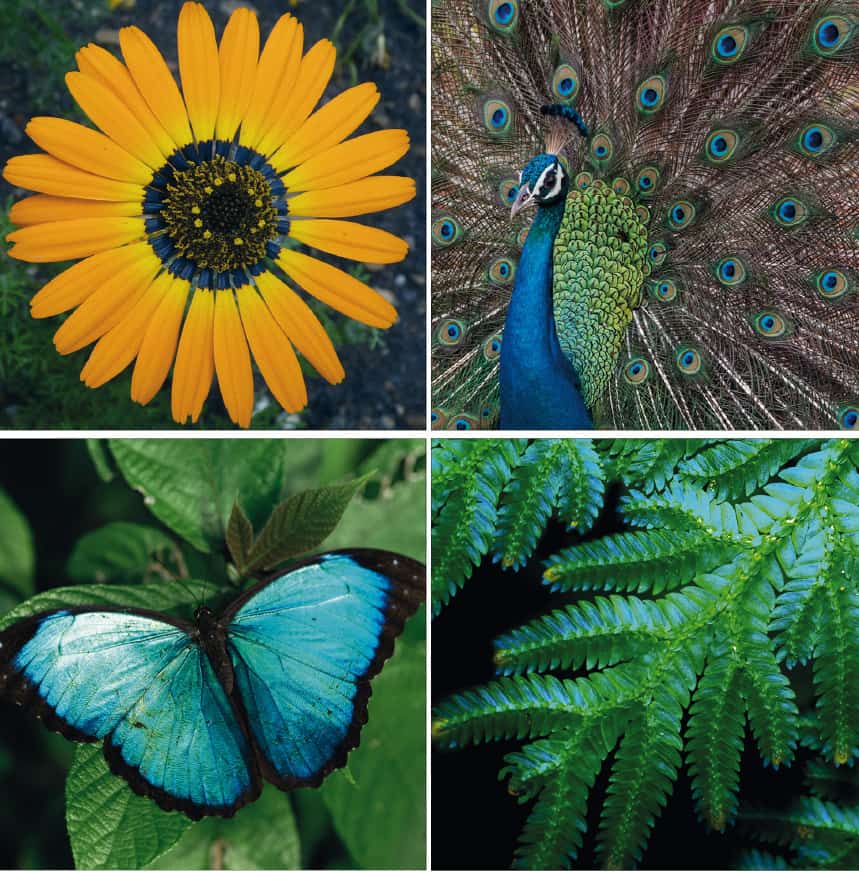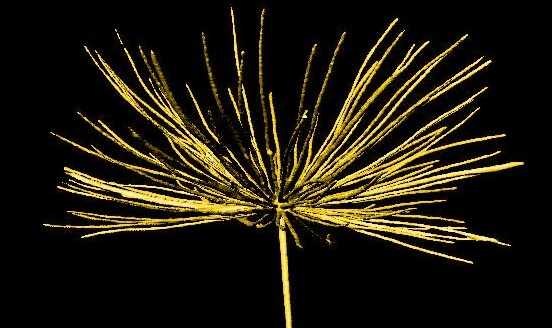Dandelion seeds create vortexes to remain aloft
22 Oct 2018
A brush-shaped structure called a pappus creates vortex rings that help keep dandelion seeds aloft, according to a comprehensive study by researchers at the University of Edinburgh in the UK. The team was also able to created artificial structures that mimicked the seeds.

Dandelions are yellow wildflowers that grow in temperate regions. Widespread and prolific, the plant is often considered a weed but is also edible and has a number of culinary uses.
The dandelion flower – actually a collection of multiple flowers – matures into white blowball full of single-seed fruits attached to a bundle of bristle filaments called a “pappus” (see figure). Resembling a chimney brush, the pappus helps the windblown seed to stay aloft over incredible distances. Although most dandelion seeds travel less than 2 m from their flowers, seeds can easily travel over 100 km in warm, dry air.
Fluid mechanics
A pappus has 100-110 filaments, which together have a large surface compared to the area of the dandelion seed it bears. Scientists had thought that dandelion seed can fly thanks the large drag force (or resistance to moving air) of individual filaments. By combining fluid mechanics, plant biology and microfabrication, the Edinburgh team has discovered that the effect of drag alone cannot explain why the seeds are so good at remaining airborne.
“We had reasons to believe that the lift enhancement from an individual filament would not be enough to provide sufficient force for the dandelion to remain aloft for so long. Therefore, we decided to investigate whether there was an interaction between the filaments that was strong enough to generate a flow feature that would operate up the sides of the entire dandelion seed instead of beside the individual filament,” explains Ignazio Maria Viola, who led the fluid mechanics aspects of the research.
Smoke and light
To gain a better understanding of the object’s aerodynamic properties, a dandelion pappus was studied using X-ray computed microtomography to assess its features and porosity – the latter being a measure of how easily air can flow through the structure. Then, researchers built a vertical wind tunnel that blew air upwards to keep a seed to hovering at a fixed height. The airflow in the tunnel was traced by illuminating smoke with a laser and recording its motion with a high-speed camera.
The wind tunnel experiment showed that a “separated vortex ring” forms in the air just above the dandelion filaments. “The existence of the vortex had been considered from the theoretical point of view in the past, but it was argued that it would be too unstable to occur in nature,” explains Viola.
As it turns out, the vortex is stabilized by the airflow through the filaments. As the air flows around each filament, it also interacts with the flow of its neighbouring filament, thus creating a so-called “wall effect”. The flow through the filaments is considerably reduced due to this interaction, which, in turn, buoys-up the dandelion seed.
Once the separated vortex is stabilized, it increases the ability of the seed to fly, because it confers an upward force on the seed. What is more, the pappus structure is four times more efficient at keeping the seed aloft than a parachute-shaped structure of similar mass.
Slotted disks
To further understand the process, the team used microfabrication techniques to make pappus-inspired structures from tiny disks of silicon. These disks had radial slots cut into them to allow air to flow through, in the same way that air can flow between the filaments of a pappus. They found that disks with no slots did not create separated vortex rings, whereas slotted disks with porosities similar to a pappus did create separated vortex rings.
The team also explored whether dandelions from different parts of the world had similar pappus structures. After obtaining seed samples from all over the world, they found little variation in the number of filaments in the pappus – suggesting that the separated vortex observed in Edinburgh dandelions was not a local fluke.
The dandelion has somehow magically understood the perfect number of filaments necessary for the vortex stabilization Ignazio Maria Viola
Even samples collected from distant locations such as Japan or China have very similar number of filaments. “The dandelion has somehow magically understood the perfect number of filaments necessary for the vortex stabilization,” says Viola.READ MORE

The team believes that there are many more examples of structures with tiny filaments and hairs with interesting fluid mechanics functions across both animal and plant kingdoms. Apart from flying, these structures may be used in swimming, feeding or even cleaning.
The biologist Camilla Pandolfi from the University of Florence told Physics World “Flying seeds evolved to maximize their dispersal distance by optimizing the shapes of their little parachutes, and the [Edinburgh team] found a new interesting way they are doing it”. She adds, “I am very glad to see that other scientists are paying attention to the many different seed dispersal strategies, as they are a huge unexplored source of inspiration for future technologies”.
The research is described in Nature.
26/10/2018 FROM PHYSICSWORLD.COM

Δεν υπάρχουν σχόλια:
Δημοσίευση σχολίου